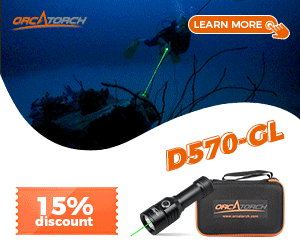Don Janni:
The brand isn't necessarily important to this question. It's that I really don't understand the differences between these configurations. These just happen to be the configurations as listed on Ikelite's web site. Can you say which would be the better option for the C-8080 & pt-023 and why?
These versions are available:
1. Package w/ Manual Controller
2. Package w/ Slave Sensor
3. Package w/ TTL Sync Cord
I'm far from deciding on a brand I assume the same configurations are available from Sea & Sea and Inon as well.
For example is there something better than the Inon setup below?

Well, there are many "Packages" to support an external strobe for your camera. Just be sure you need one, because none of the solutions are cheap; be prepared to spend as much on the strobe and controller as you did on the camera, at a minimum.
Looking at the first option, manual control, Ikelite has a nice controller for that, least expensive, and reliable. You have to set flash power and adjust the camera manually for proper exposure, which can be done but requires experience. A lot of people shoot this way with very good results, so it is worth considering.
Second Option, slave control: The Ikelite hard wired slave controller requires a sensor watching the strobe on the camera fire, which sends control signals to the external strobe to copy the pattern of the on camera strobe. The Inon and Sea&Sea fiber optic coupled slave controllers also require the on camera strobe to flash, and send optical signals to the external strobe to follow that pattern. They can all work well, but have limitations too. The on-camera strobe wastes camera battery power, so you have to change batteries more often. I believe you cannot use super macro mode when the onboard strobe is used, so close flash work is not possible. These are in the middle in terms of cost and performance.
The third option, TTL strobe control, is the best and most expensive. Olympus, Ikelite and a German manufacturer can support it (and there are probably a lot of very high end housing makers that do also, but they are in another price league). The Olympus solution uses a special housing and cable for their cheap FL-20 strobe, which is somewhat underpowered for underwater use but does work for close subjects. The Ikelite solution requires you to buy a new housing, tray, arms, port, cord, and their strobe (you can't use your PT-023). This is quite expensive -- but works quite well. The German solution uses your existing Olympus PT-023 housing, but adds some electronics inside your camera housing. You can use many less expensive Sea&Sea strobes with this controller, which saves money. This do-it-yourself solution apparently works well, and has a good following in Europe. I will be trying one of these soon, as it seems the best solution for me (but i can't say from personal knowledge how well it works as yet).
If you want an off the shelf solution and can afford the cost, probably the Ikelite TTL system is the best reasonably priced solution for the average diver.








